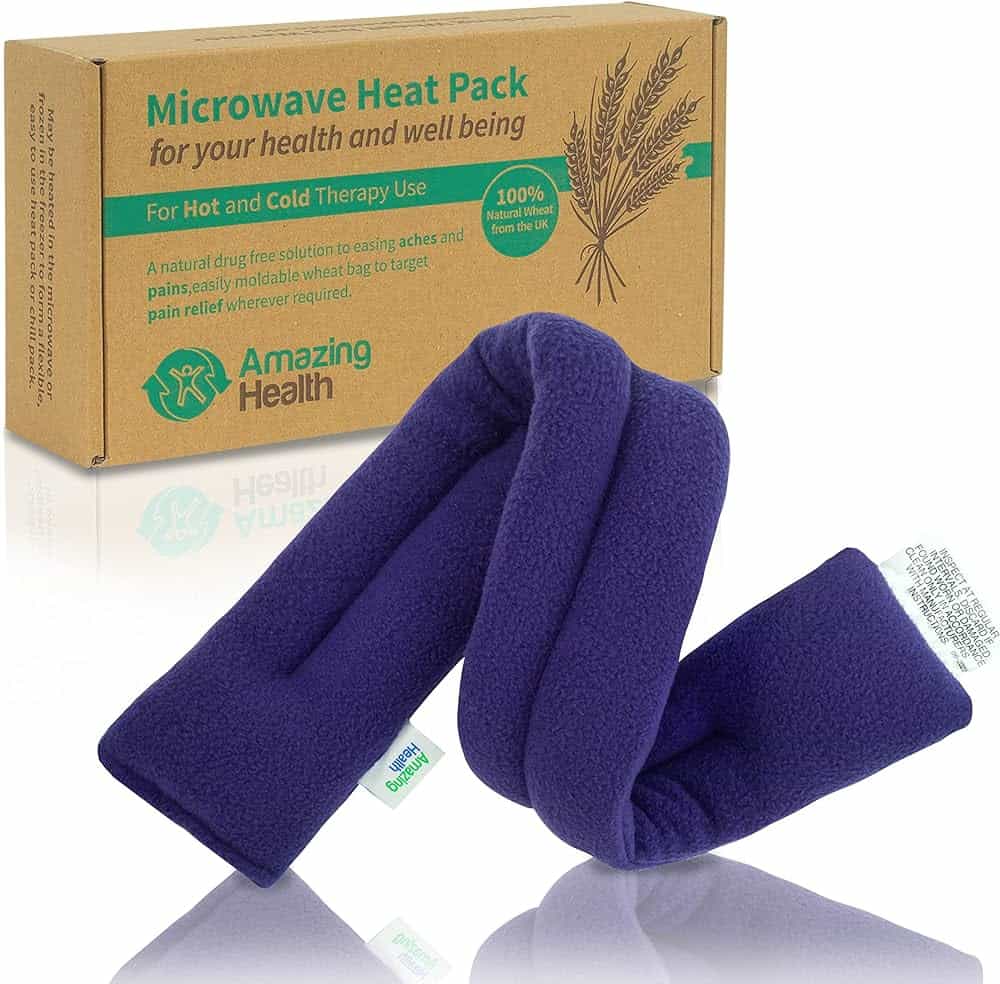Wheat Bags for Microwaves: The Ultimate Guide for Parents
Hey there, Super Parents! Are you looking for a natural way to soothe your little one’s tummy aches, growing pains, or even just to warm their toes on a chilly night? Look no further than the comforting embrace of a wheat bag heated in your trusty microwave. But wait! Before you zap away, let’s ensure you’re well-informed about safety, benefits, and how to choose the perfect wheat bag for your family.
Understanding Wheat Bags
First things first, what exactly is a wheat bag? These cuddly companions are pouches made from fabric, filled with cleaned wheat, that can be heated in a microwave to provide a source of warmth. Unlike traditional hot water bottles, wheat bags come without the risk of scalding water spills and can conform to the shape of the body, making them a popular choice for children’s bedtime rituals.
Benefits of Microwavable Wheat Bags
Wheat bags are not only for the little ones — they’re a hit with parents too! Here’s why:
- Natural Heat Therapy: The heat emitted from these bags can help soothe muscle aches, relieve tension, and even reduce the discomfort from cramps.
- Stress Reduction: The gentle, sustained warmth can help reduce stress and anxiety, promoting relaxation both for parents and children.
- Sleep Aid: A warm wheat bag can help relax your child, making it easier for them to drift off into dreamland.
- Portability: These bags are easy to carry around, which means children can take a little comfort with them, whether it’s on long car trips or visits to the grandparents.
Safety First: Tips for Using Wheat Bags
Never underestimate the importance of safety, especially when it involves products used by your children. Here are some essential safety tips to remember:
- Follow Instructions: Always adhere to the manufacturer’s guidelines regarding heating times and care for the wheat bag.
- Avoid Overheating: Heating the bag for longer than recommended can cause the wheat to burn or even start a fire, so keep a close eye on that clock!
- Regular Inspection: Check the bag regularly for any signs of wear and tear. If the fabric is damaged, it’s time to replace it.
- Under Supervision: Never leave a child unattended with a heated wheat bag, and ensure they understand how to use it safely.
- Storage: Keep wheat bags in a cool, dry place to avoid dampness, which can lead to mold.
Choosing the Right Wheat Bag
With numerous designs and fabrics on the market, selecting the right wheat bag might feel like finding a needle in a haystack. Here are some features to consider:
- Fabric Type: Opt for natural fabrics such as cotton or linen which are durable and have good heat-retaining properties.
- Size Matters: Make sure the wheat bag is an appropriate size for the intended use, whether it’s for cuddling or targeted pain relief.
- Removable Covers: For hygiene purposes, choosing a bag with a washable cover is a plus, especially with children around.
Now that we’ve warmed up to the concept of microwavable wheat bags, it’s time to delve a bit deeper. Stick around as we explore the importance of choosing the correct filling, the myriad ways wheat bags can be utilized for comfort, and additional safety precautions to keep your family safe and snuggly. The warmth of a wheat bag can be a simple pleasure, but ensuring it’s a safe one is a parent’s paramount responsibility.

5 Things Parents Should Know When Preparing Wheat Bags for the Microwave
Time to get cozy! But before you do, here’s the lowdown on prepping those warm wheat bags for your microwave to ensure a safe and comforting experience for your children:
1. Wheat Bag Filling: It’s What’s Inside That Counts
Not all wheat bags are filled equally. It’s essential to check what’s inside. Choose a filling that can safely retain heat, such as natural grains like wheat or rice, and avoid synthetic fillers. The right filling ensures even heat distribution and a pleasantly warm experience.
2. Heating Times: Patience Brings Perfect Warmth
Each microwave is different, so are the heating times for wheat bags. Generally, a standard wheat bag should be heated for 1 to 3 minutes, depending on the size and the power of your microwave. Always start with the lowest time recommendation and gradually increase to find the optimal warmth.
3. Shaking It Up: Even Heat is Happy Heat
To avoid hot spots, give the wheat bag a good shake midway through heating. This helps distribute the grains evenly, ensuring a comfortable and even temperature throughout the bag. Plus, a little shake is a perfect way to check the bag’s temperature before giving it to your child.
4. Testing Temperature: Goldilocks’ Rule Applies
Too hot? Too cold? Just right! That’s what you’re aiming for. After heating, carefully feel the bag’s temperature with the back of your hand. It should be warm — not hot. If it’s too warm for you, it’s too warm for a child. Let it cool off a bit before use.
5. Cozy Comfort: Handle with Care
Once the wheat bag is at the perfect temperature, place it where it provides the most comfort for your child. For a general snuggle, placing it on the lap or beside them is often best. For aches or growing pains, position it gently on the affected area. Always supervise and ensure the heat is not causing any discomfort.
How to Make the Most Out of Wheat Bags
The beauty of wheat bags isn’t just in their warmth, but also in their versatility. Here are just a few ways to integrate them into your family’s comfort routine:
- Bedtime Companion: On a cold night, slide a warm wheat bag between the sheets a few minutes before bedtime to warm up the bed.
- Boo-Boo Buddy: When chilled, a wheat bag can double as a cold compress for minor bumps or bruises.
- Travel Buddy: Bring along the wheat bag on car rides or flights for a sense of home comfort on-the-go.
- Reading Nook Warmer: Tuck a wheat bag close while you and your child explore stories and adventures in a book.
Remember, the true beauty of a wheat bag lies in the moments you spend with your child, providing them with warmth, comfort, and care. Take these tips to heart to make those moments as safe and soothing as possible. Happy snuggling!
Advanced Safety Precautions for Wheat Bag Use
While the basic safety tips are your go-to, here are some additional precautions to ensure utmost safety:
- Hydration Check: If the wheat bag starts to smell burnt or feels too dry, it may need to be replaced. Dried out bags can be a fire risk.
- Age Consideration: For very young children or babies, consider alternative sources of warmth, as wheat bags may not be suitable.
- Fire Safety: Always have a working smoke detector in your home. In the very rare event of a wheat bag catching fire, you want to be alerted immediately.
- Temperature Consistency: After heating, let the bag sit for a minute to allow the heat to settle and distribute evenly before use.
- Care and Maintenance: If your wheat bag comes with specific maintenance instructions, such as occasionally sprinkling it with water to maintain moisture levels, follow them to prolong the life and safety of your bag.
By following these tips and staying vigilant, wheat bags can remain a cherished part of your family’s comfort toolkit. Always prioritize safety as you enjoy the wholesome goodness of a well-heated wheat bag. Keep smiling and stay warm!
See more great Things to Do with Kids in New Zealand here. For more information see here
Disclaimer
The articles available via our website provide general information only and we strongly urge readers to exercise caution and conduct their own thorough research and fact-checking. The information presented should not be taken as absolute truth, and, to the maximum extent permitted by law, we will not be held liable for any inaccuracies or errors in the content. It is essential for individuals to independently verify and validate the information before making any decisions or taking any actions based on the articles.




